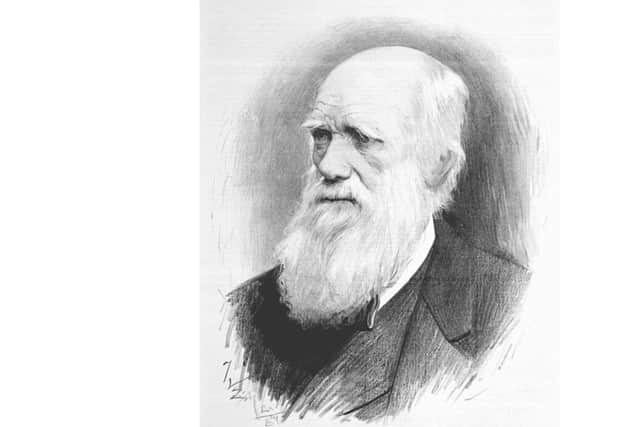Charles Darwin's bizarre Portsmouth connection has been revealed
and live on Freeview channel 276
Charles Darwin is known across the world for establishing the theory of biological evolution, which states that all life began as small organisms, developing through natural selection.
Born on February 12, 1809 in Shrewsbury, and living until the age of 73 – when he died in Kent – it would be natural to assume that Portsmouth played little to no role in his life.
Advertisement
Hide AdAdvertisement
Hide AdBut now, an auction being held in Wiltshire tomorrow suggests there is more to the story than meets the eye.


A nautical barometer made by George Stebbing in Portsmouth is being sold as part of the Woolley and Wallis’s Furniture, Works of Art and Clocks auction.
Moving to Portsmouth around 1800, he made sextants, compasses and marine barometers for traders and explorers coming in and out of the city.
His work – and adverts in the Hampshire Telegraph at the time – attracted the attention of Charles Darwin.
Advertisement
Hide AdAdvertisement
Hide AdIn 1831 his eldest son, also called George, set sail on HMS Beagle as Darwin’s librarian and instrument maker, on the voyage that sparked the genesis of the scientist’s theory of evolution.
Mark Yuan-Richards, from Woolley and Wallis, said: ‘Stebbing maintained strong links with London, even becoming a freeman of the city in 1817, but Portsmouth was the best place for him to work alongside the navy and experiment for them with several prototype instruments, many of which were then adopted into general use.
‘Marine barometers, such as the one we are selling, came into their own during the 19th century and there would certainly have been an example like this one onboard HMS Beagle.
‘They enabled the captain to predict changes in the weather and thus prepare to handle any storms or squalls that might have taken the crew unawares in previous centuries.’
Advertisement
Hide AdAdvertisement
Hide AdThe barometer up for auction tomorrow is a metre long and made of mahogany, with ‘G Stebbing Portsmouth’ signed into the ivory dials. It’s expected to net up to £1,000 at auction.
A message from the Editor, Mark Waldron
Thank you for reading this story. The dramatic events of 2020 are having a major impact on our advertisers and thus our revenues.
The News is more reliant than ever on you taking out a digital subscription to support our journalism. You can subscribe here for unlimited access to Portsmouth news and information online.
Every subscription helps us continue providing trusted, local journalism and campaign on your behalf for our city.
Comment Guidelines
National World encourages reader discussion on our stories. User feedback, insights and back-and-forth exchanges add a rich layer of context to reporting. Please review our Community Guidelines before commenting.